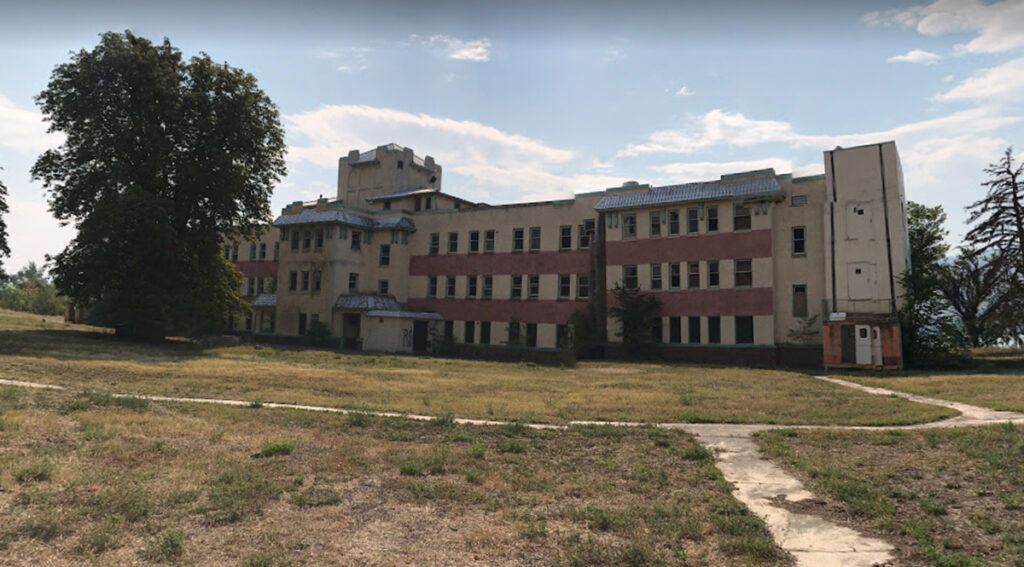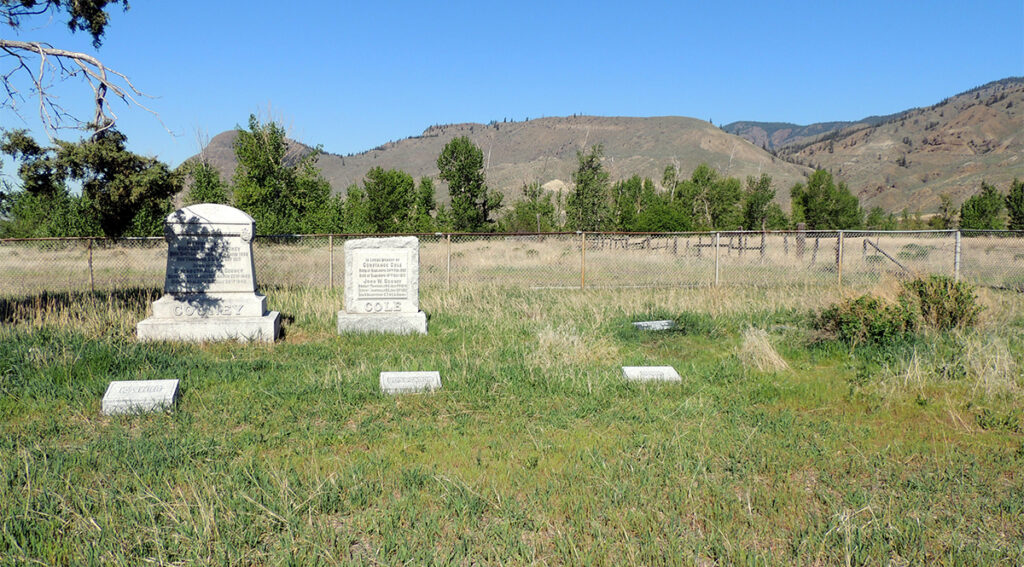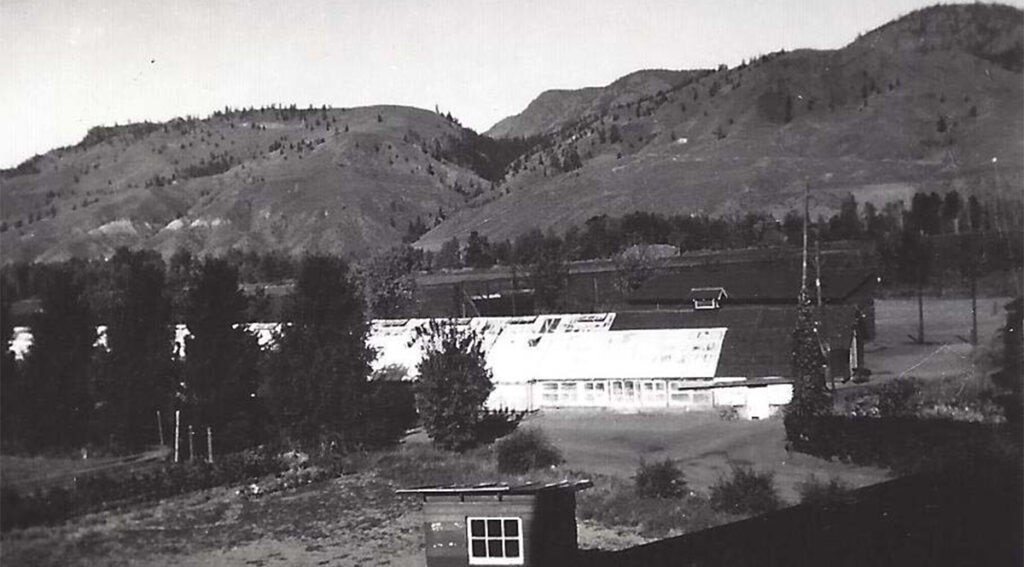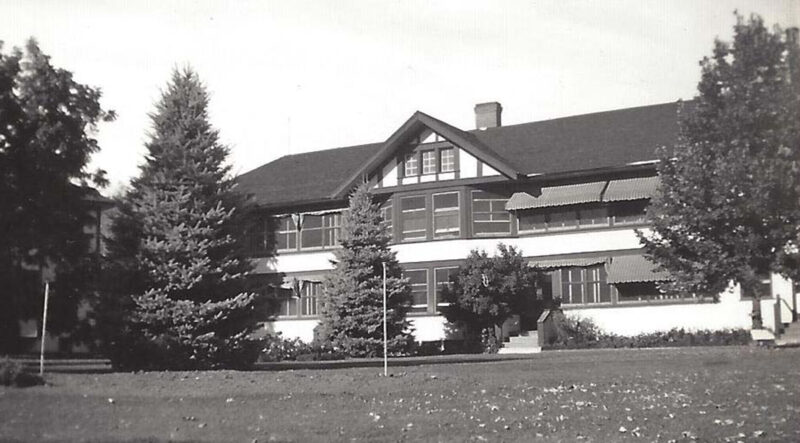If there’s anything haunting the 460 acres of Tranquille in Kamloops, British Columbia, it could very well be the ghosts of modern horror tropes.
Tranquille is nestled on the plain overlooking Cooney Bay, where Kamloops Lake meets the Thompson River. The former sanatorium treated tuberculosis patients from 1907 to 1958 and became a mental health facility until its permanent closure in 1983.
Unfortunately, Tranquille has become the subject of grand teenage fantasy, when speaking with an author and the property managers who have ties to the community.
Rich in history
History is at the forefront when you speak with community members. The Secwepemc used the area as a fishing and hunting settlement. Once European contact was established in 1811, two families called the grounds home: the Cooneys and the Fortunes.
Cooney Bay is named for the former, and the main drag in Kamloops is named for the Fortunes.
“The Cooneys came over as members of the Overlander party,” Tranquille co-owner Russell Cundari said, in a January phone interview. “The Overlanders were settlers that came overland and down the North Thompson River and suffered great hardship.”
The Cooneys would remain there until the family’s matriarch was coerced into selling the land to the provincial government for $37,000 back in the early 1900s. With the British Columbia Anti-Tuberculosis Society forming in 1904, the property that oversaw Kamloops Lake would be earmarked for a sanatorium. In 1907, Tranquille was built, initially as a private centre for tuberculosis patients.

The main building of Tranquille Sanatorium. A series of tunnels connected the buildings with the main cafeteria and laundry room.
History buff Wayne Norton, who wrote a book on the history of Tranquille in 1999 called A Whole Little City by Itself: Tranquille and Tuberculosis said there was a knee-jerk response of nimbyism by the community.
“There was opposition, to begin with,” he said, in January phone conversation. “Over the next decade, they got used to the idea.
“By the time the government took over the institution in the early ’20s — finally acknowledging that health was within its jurisdiction — they made some big changes by adding new buildings.”
What used to be a source of pride for the city of Kamloops, with its delicately cared for gardens and pristine architecture, has become a developmental albatross for some.
The advent of antibiotics helped fight back the White Plague, ergo the transition from sanatorium to a mental health facility.
One constant throughout those years was the agricultural use of the land. Tranquille was self-sustaining with crops being harvested and animals being reared on the lands. That agrarian use became a source of revenue, providing surpluses of meat, dairy and vegetables.
Lawyer, and member of the original four-party consortium that purchased the grounds from A&A Foods in 2000, Russell Cundari, has never had a paranormal experience at Tranquille and can’t imagine why there would be any such story as, from his understanding, there have never been reports of malpractice or abuse of the patients.
There were always myths, perhaps spawned by the younger populations of Kamloops, like that of the settling family’s matriarch still haunting the cemetery.
His business partner and developer Ed Neilson proposed that the duo purchase the property to fulfill a few dreams they had, including turning it into an agricultural centre. The two joined forces with two silent partners Cundari wanted to build a home on the land, but the developers ran into a bureaucratic snag after bureaucratic snag.
“We found out that although it had a water source when it was an institution, the city didn’t want to accept that water source and they didn’t want to extend the city water,” Cundari admitted. “The province didn’t want to approve a water source within the city.”
Although they solved the problem of fresh water by digging two 500-foot deep wells, the B.C. government requires the water source to be monitored for over a year to gauge its sustainability.
On top of that, they will have to pay for any infrastructural needs required on the property, which will be separate from Kamloops.
It’s pronounced Tron-keel
Cundari can spot an outsider just by listening to how they pronounce Tranquille. Similar to Toronto’s Spadina House being pronounced an opposite way from the street — Spa-dee-na instead of Spa-di-na — most outsiders will pronounce Tranquille the way it says in the dictionary.
There are plenty of opportunities for urban explorers and abandoned building photographers to skulk about, and Cundari said he’s aware of it.
“Certainly, it looks spooky. Every image you take out there, it’s going to look creepy,” Cundari said. “But if you’re out there in the summer, the sun is blazing down, it’s 100 degrees, birds are chirping.”
What that means is he hasn’t experienced anything that can’t be explained away by logic. Even strange occurrences in the underground tunnels that connect buildings to the main hub can be shrugged off.
Tuberculosis claimed plenty of victims within the walls of Tranquille, and some bodies have been recovered from Cooney Bay, as the area serves as a backwater for any unfortunate soul who has fallen in Thompson River or Kamloops Lake.

The private cemetery belonging to the Cooney family. It’s found at the end of Tranquille Road.
“Although we’ve seen some weird stuff, we have never seen anything that’s a total mystery to me that it would be considered paranormal or normal,” he said, adding a few stories to help underscore his experiences.
One time, while armed with flashlights, he and a colleague walked through the tunnels. Cundari thought he saw a hanging body from one of the pipes, but it turned out to be a dummy planted there by a previous visitor.
On another occasion, Cundari and another colleague heard strange sounds emanating from the tunnels. Upon further investigation, they found a coyote that was chasing bats.
“We turned our tail and ran out. We didn’t know if the animal was safe to go near or if it was rabid,” he admitted. “If we hadn’t seen the coyote we may have thought the sounds were paranormal.”
Most of the buildings remain intact, however of the 40, some have been razed for safety reasons. The small power plant, which was used to burn oil and natural gas, had one of its exterior walls collapse.
Another safety concern, on par with most buildings built from 1907 to 1958, is asbestos. Remediation is another expenditure that the current ownership team will tackle.
“It will probably cost $6 million to demolish these buildings with asbestos in them,” Cundari said.
It appears only bureaucracy and infrastructural expenses are haunting the owners of Tranquille, with very few consistent stories manifesting themselves to the larger population of Kamloops.
However, Cundari did disclose one portion of the grounds, far from the sanatorium, that does have something of a ghost story to it.
“One of the most photographed areas on the property is the old cemetery,” he said. “(It’s) the Cooney family cemetery. Various members of the family are buried there.
“People have said they have seen a spirit roaming around the cemetery.”
MTV’s Fear
History buff and former social sciences teacher Wayne Norton wrote a book about the history of Tranquille, which might explain why he was asked by producers of an MTV reality show to be a subject matter expert. Outside of the recorded history, the 72-year-old never heard any ghostly tales about the old sanatorium, save for the creative musings of his students.
“A lot of the students had claimed the Tranquille had been an institution for the criminally insane,” he said, with a laugh, during a phone interview. “Of course, it had not, and it’s part of that mythology that is hard to counter.”
Norton had not thought about his interview with the producers of “MTV’s Fear” for a long time.
The show, which aired from 2000 to 2002, had six contestants run around allegedly haunted locations in order to win a sum of money. Norton was featured on a second season episode that took place at the coyly named “Serenity Lake”.
“I had forgotten about that for years. I was trying to think of the title of it about a month ago,” he admitted. “It’s kind of bizarre. There’s a lot of mythology about Tranquille, especially amongst the young people.”
The show had manifested several unique characters, like the wife of one of the doctors, Ellison, who was consumed by tuberculosis, and another — playing on the mental health facility trope — appropriately called the Pig Man.

Tranquille was self-sustaining with greenhouses and farm animals. The pig farm, seen here in this 1945 photo, could have leant itself to the Pig Man described in “MTV’s Fear”.
The Superstitious Times reached out to psychic Carla Baron, who appeared as a regular subject matter expert on “MTV’s Fear”. After technical difficulties, she declined to comment.
Each story from the show had no grounding in historical fact. However, one in seven people succumbed to the White Death during the epidemic in the early 1900s.
“Since it closed, younger kids imagined all kinds of things that happened there,” Norton recalled. “I was a high school teacher when the book came out, students wanted to talk about it. But what they wanted to talk about were the aliens, the ghosts and the moving of dead bodies through the tunnels.”
The proliferation of ghost stories has been a concern for development manager Tim McLeod of Tranquille Ltd. Partnership. He lives on the site with his wife, running Tranquille Farm Fresh.
“Over time the internet has turned an unfounded rumour into an internet ‘truth’ which is effectively disrespecting the thousands of local residents who lived and worked here until 1985,” he wrote, in an email. “It is sad. Instead of focusing on the fantastic true stories of the site and honoring those who poured their lives into it, a small group of people are insisting on putting their spin on a story they do not understand nor own.”
Even some well-meaning journalists, he added, have been “drawn into this web”.
The team currently working on redeveloping Tranquille into an agricultural community is passionate about the future of the property.
Tranquille Farm Fresh did host a theatrical performance in 2018 with Chimera Theatre called “Padova: The Untold Story”.
Still, the myths surrounding Tranquille have been subject to many common horror tropes — the fear of death, disease and medical malpractice. The infamous Waverly Hills Sanatorium in Louisville, Ky. is one location that has been explored by a multitude of American investigators.
Closer to home, there is Riverview Hospital in Coquitlam, which has been the subject of many ghostly tales. Then again, no two locations are ever alike.

